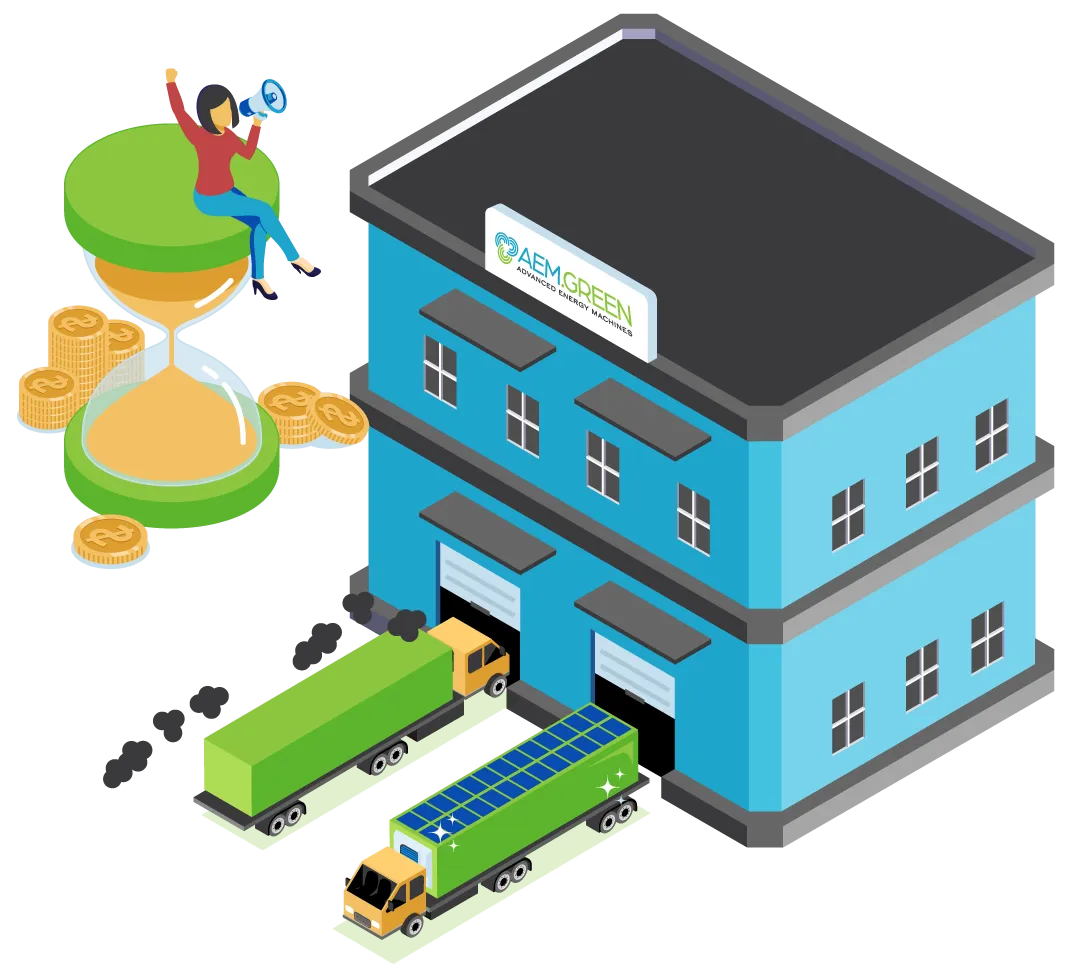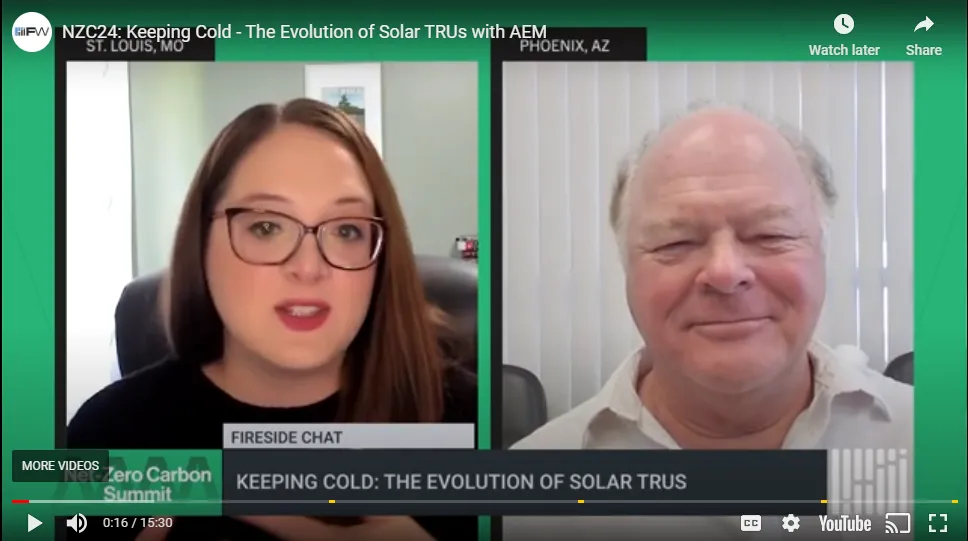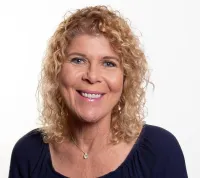Blog & Press Page
Achieving ESG & Zero Emissions
Cleaning up Cold Chain...


FreightWaves Net-Zero Carbon Summit Highlighting Robert Koelsch, AEM's ZE Technology Innovations
This fireside chat recap is from FreightWaves’ Net-Zero Carbon Summit on Wednesday.
FIRESIDE CHAT TOPIC: Keeping cold: The evolution of solar TRUs.
DETAILS: Keeping ice cream cold by using the sun is now the way of the future. Robert Koelsch, co-founder and CEO of Advanced Energy Machines, joins FreightWaves’ Mary O’Connell to break down the company’s new SolarTechTRU reefer unit solution.
KEY QUOTES FROM KOELSCH:

“The idea was to go 100% zero emission, not a hybrid, no diesel backup … in this brutal environment.”
“We all know transport and refrigeration of food is a very challenging task. And so it’s not so much, can you do it, but can you do it and make it reliable in the field?”
“I think our database right now is, can we operate as efficient and as trouble-free as a diesel, as everybody’s come to love their diesels over the last 60 years? And can we change the industry’s mind to get away from diesel, get away from black carbon, and that’s really what our mission is today.”
#Advanced Energy Machines #FreightWaveslogistics #Net Zero Carbon Summit
TRANSCRIPT FROM VIDEO:
Can you tell us about the origins of the SolarTechTRU, and what inspired you and your brother to develop this technology 15 years ago?

Robert: We were looking for zero emission technology to develop in the transportation industry. And we looked at trucks, we looked at cars, and we said, that's going to be a multi billion, if not trillion dollar effort.
And while we're in a meeting, looking at a solar panel company merger, we got blocked in by a transport refrigeration unit and when we studied the sector, we went, this sector needs zero emission technology to replace the dirty diesel.
And in transport refrigeration units, that dirty diesel is so bad that when we take one of these transport refrigeration units off the road, it's like taking 129 combustion vehicles or cars off the road. So there's a lot of pollution associated with these. So that's what got us involved in it. We saw that nobody was paying any attention.
There were 2 major players that supply diesels every day that had no electrical zero emission solutions. And so we decided to jump into the sector.
Great. Okay, what specific performance data and real world results have you gathered over the years to demonstrate the efficacy and reliability of the SolarTechTRU?

Robert: Well, the first thing that happens when you go into a site where people are using diesels is you have to perform tests to prove that your cooling is as good or better than the diesel. So, we've spent thousands of hours at customer sites with which each customer has their own requirement. One customer, for instance, Albertson's/Safeway requires a 50 foot trailer at minus 20 degrees.
So you've got a 50 foot long ice cream trailer that you're trying to keep at minus 20, which means you have to deliver minus 35 degrees to it in order to maintain that box when it's 100 degrees outside. So that's one application. And then you might have a Whole Foods application where they're shipping produce at 35 degrees.
53 foot trailer, that's another application. So whatever the customer application is, we have to prove that we can cool as good or better than a diesel. That's the proof that we've had to do. Every year we have to report to CARB to our voucher program called CORE, the results of customer operations, and that includes diesel eliminated, carbon reduced, uptime, downtime.
Any advice the customers have on improving the product and so we're into our third year of that reporting right now. So we've got hundreds of thousands of hours that the equipment has been data logged for every 60 seconds. I'll say that one more time. The equipment gets data logged up through the cell towers and onto a server every minute of every day to show just what the performance is on the equipment.
So the data logging and the reporting requirements have been very stringent and we've done very well.
And how does the low voltage DC power system in the SolarTechTRU contribute to safety and efficiency for fleet operations?

Robert: Our design, we built our first system in 2009 as a high voltage system, and it scared us so bad that we tore it apart and we built it into a low voltage DC system, just like forklifts. What we did was we looked at the forklift industry and said, okay, it's a very safe operating history for forklifts, and the low voltage is safe for human beings to be around. So it made sense as much interface with humans these trailers have, because they have to maintain the food temperatures while they're being plugged and unplugged, what we decided was to go low voltage so that we could never electrocute anybody, we don't fibrillate anybody's hearts, and there's no lockup electrocution or arc flashing events associated with low voltage. That was our history to look at the forklift industry and say, that's safe for human beings to be around.
That's why we are low voltage 46 volts in DC. That also lends to efficiencies because your batteries. are all DC voltage, and your solar panels are all DC voltage. So the only thing we have to flip from high voltage to low voltage is when we go on the grid. Now, when you try to decide whether you want to go with an electric TRU, the main question is what's your range going to be?
And so the efficiency of running DC on the road, away from the grid, away from your distribution center, is all DC. And again, your range extension with our momentum generator is a DC generator. Our range extension with solar panels are DC powered solar panels. And of course, running the reefer with a DC battery pack, that's all DC on the road.
Max efficiency is obtained while you're away from your distribution center, gives you max life battery expectancy, and it gives you the longest range on the road just being DC.
Could you explain how your proprietary cordless AI based charging system works and how it benefits fleet managers compared to traditional plug-in systems?

Robert: If you were to look at the data of trailers running every day what you'll find is, you average about a ten percent downtime with human beings not plugging in the transport refrigeration units when they're supposed to be plugged in. With automatic charging and AI and computer involvement in that process, you maximize your uptime on your trailer fleet because the computer is doing the charging and you don't have to rely on Joe who decided that he's got a back pain this morning and he can't bother himself with walking to the back of the trailer and plugging it in.
So when you've got automatic charging, then he's just got to drive his truck, park the trailer, pull away. You got no human interface. So we know from two million hours of operating time that we're saving 10 percent in your uptime by going to automated charging. And you're increasing the life of your batteries because your pads and automatic charging give you more time on the charger.
Not only do you save the ten percent uptime, but you're on the charger more and the computers. Managing the charge more.
Great. Can you tell us how AEM's technology creates microgrids for distribution centers. How does the system operate and what are the key advantages for fleet operators?

Robert: We would like people to be operating 100 percent off solar panels.
It's just like your home when you think about your home. If you add energy storage to your home, you can capture more and more solar power as solar panels get more efficient, or as you deploy more. With a microgrid, a lot of facilities are starved of grid power. And when you decide you want to bring in, 20 more electric tractors, you can't do it because you have to pull power in from Southern Cal Edison into your facility. So rather than doing that, what we propose is to put a microgrid in where you put solar panels and energy storage to supply the energy that our TRUs require. We can do that with TRUs because they don't require a lot of energy compared to a tractor.
So you can do a hundred TRUs. Compared to maybe 20 tractors and gain 20 times or five times more pollution reduction for the same amount of power. And so TRUs are a great place to start, and when you combine the efficiency of A TRU with the advantage of using a microgrid and energy storage, you can stay off the California grid.
And if you look around the country, and you look at all the white papers online, what's everybody talking about? Oh, the infrastructure can't handle these EVs. When you take solar panel micro grids with energy storage, you're not on the infrastructure of the grids anymore. That's the big advantage in combining the automatic charging, the computer balancing of the battery packs, along with the energy storage and solar panel micro grid. It just makes a lot of sense for companies to Stay off the grid.
With your focus on California and hard core carbon reduction, what has been the most significant environmental impacts of the SolarTechTRU so far?

Robert: A story that we had at a grocery distribution company where the administrative assistant walked out and said, Oh, you're here for a meeting. What are you here for?
I pointed to the 40 TRUs electric zero emission TRUs we had running and I said I'm here where we operate all these electric TRUs. And she looked at me and she said, Oh, my goodness. I didn't realize that. I haven't had to sweep the black carbon soot off my artificial grass here, for months at a time, and I used to have to sweep it off every few weeks.
There's a real world example of somebody understanding what the soot from black carbon emissions from diesels looks like. And what wasn't mentioned was I haven't been breathing that in either over these past months that the systems have been operating. As the public becomes more aware of what black carbon emissions from diesels looks like, it's going to become not just that you don't have to sweep your artificial carpet up as often to clean the soot off, but you're going to breathe healthier air every day, and longevity is going to be improved in mankind because of it.
Last question. What are the main challenges AEM has faced in replacing diesel powered TRUs with zero emission TRUs?
And how have you overcome them?

Robert: You have to overcome it with onsite support. The people that are operating these systems are very uncomfortable with going electric versus diesels that they've been used to for decades. So, onsite support is very important, not only to keep the equipment up on a great, basis, but also to hold the hands of the people that are trying to integrate it every day because they don't get paid for integrating technology. They get paid for delivering food every day. They don't want to be bothered with something new. So, when a question comes up, when you've got onsite support there, people feel much more comfortable using the new technology because it is pretty "gee whiz", it's got a touch screen computer. That's like getting in a Tesla for your 1st time and looking at a screen that's driving your car. It's much the same way with a zero emission TRU. You feel like the computer is driving the whole system and it's pretty "gee whiz" when you've got a touch screen that you can control the TRU with.
I think onsite support from us as a manufacturer to the distribution centers is probably the key element.
That's great. Yeah, change is difficult in every way. These have been around since 1950's
50s really?

Robert: 50s.
Yeah, it was all cubes of ice off the lakes before that.
It's been quite a mountain.
Yes. This was great. Okay, we're done.
Robert: Thank you.
Yeah. Thank you!
We appreciate you as much as you appreciate us
Send your stories too!
Let's keep our air clean & efficiencies flowing!
Copyright Advanced Energy Machines ©2024 All rights reserved






